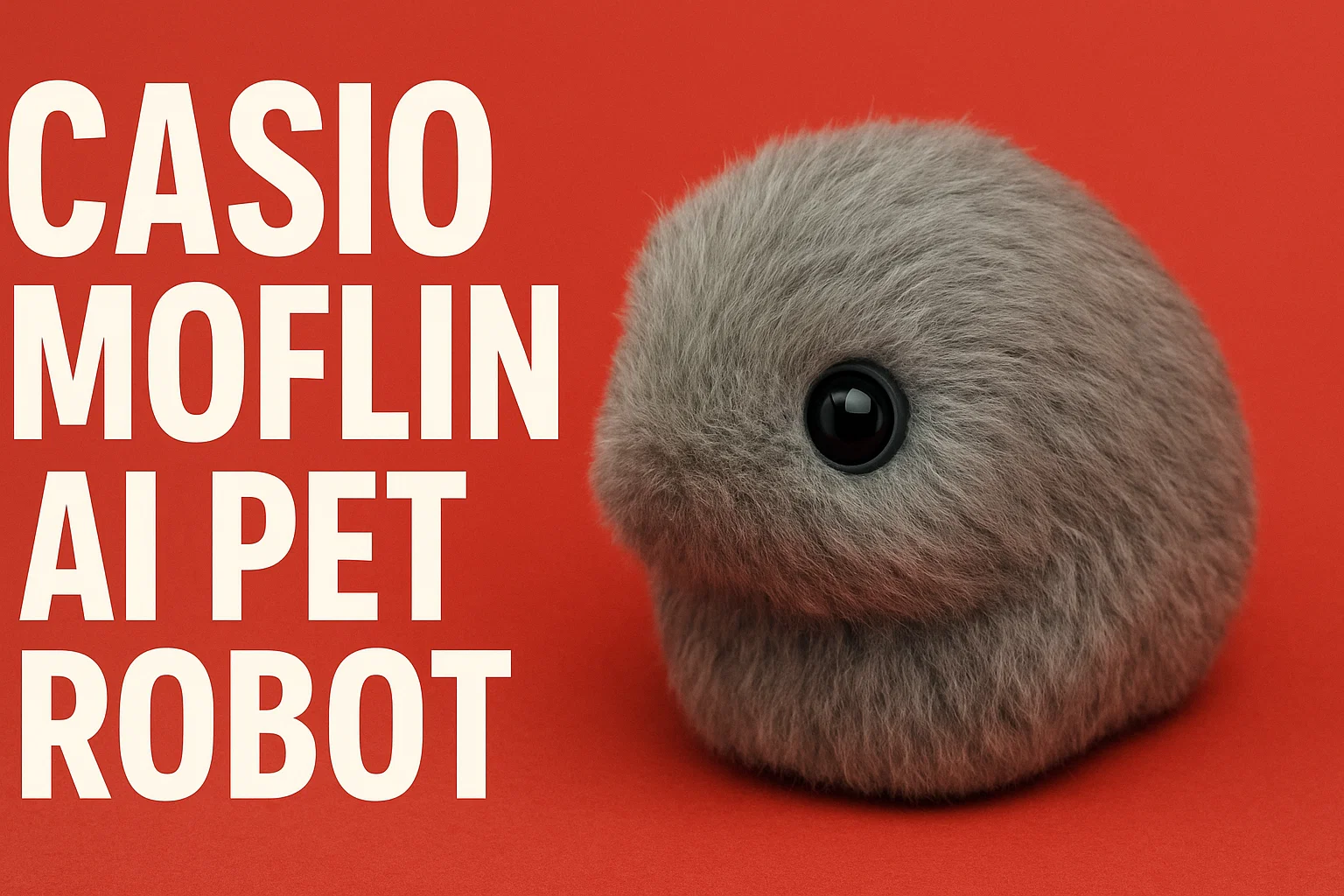What Exactly Is Moflin AI Pet? A Good Alternative to a Real Pet?

Tokyo, Sept. 18, 2025 — Casio has launched the Moflin AI pet, a plush robotic companion designed to simulate emotional bonding. The device, which sold out in Japan after its debut, is now rolling out to overseas markets and drawing attention as a possible alternative for people who cannot own live animals.
Moflin uses sensors for touch, sound, and motion to develop a personality unique to each owner. Casio claims the robot can generate more than 4 million emotional patterns, expressed through soft sounds and subtle movements. Owners can track its development through a companion app called MofLife (Digital Trends).
The AI pet runs for about five hours per charge and recharges in a dock that doubles as its “bed.” In Japan, it retails for around ¥59,400, or about $400, making it a premium gadget rather than a toy (The Verge).
Growing Interest in Robot Companions
Demand for Moflin surged shortly after release, with units quickly selling out. Industry analysts say buyers are largely adults seeking comfort and companionship without the responsibilities of caring for a living pet (BetaNews).
On LinkedIn, technology commentators have described Moflin as a “healing robot” and highlighted its potential in eldercare settings and for people dealing with isolation (LinkedIn).
Benefits and Drawbacks
Moflin offers companionship without the challenges of feeding, grooming, or vet visits. Its soft design and responsive behavior make it appealing to seniors, people with allergies, or residents of apartments that ban pets (The Guardian).
However, limitations include its short battery life, maintenance requirements, and lack of mobility. Unlike Sony’s Aibo or other robotic animals, Moflin cannot walk or perform tricks. Some users have noted that its behaviors feel repetitive after extended use (NotebookCheck).
Can Moflin Replace a Real Pet?
Industry observers say Moflin should not be regarded as a substitute for dogs or cats, but rather as an option for people who cannot keep live animals. While it may provide comfort in settings such as eldercare, allergy-sensitive households, or apartments with pet restrictions, it lacks the unpredictability, movement, and long-term bonding of living companions.
Commentators on LinkedIn have described Moflin as a supplement to human–animal relationships, not a replacement. The distinction reflects a broader debate about the role of AI in emotional life: whether robotic devices should fill gaps left by practical limitations, or whether they risk reshaping expectations of companionship altogether.
The Bigger Picture
Moflin’s arrival fits into a larger wave of emotional robotics gaining ground in global markets. Japan has already experimented with robots such as Paro, the therapeutic seal, and Sony’s Aibo, the robotic dog. Casio’s entry signals confidence that AI-driven pets can appeal beyond novelty into consumer wellness and lifestyle segments.
Analysts say the early popularity of Moflin underscores shifting attitudes toward companionship at a time when aging demographics, urbanization, and social isolation are driving new demand. Whether it becomes a mass-market success or remains a niche product, its trajectory may reveal how far people are willing to accept machines as emotional partners.
